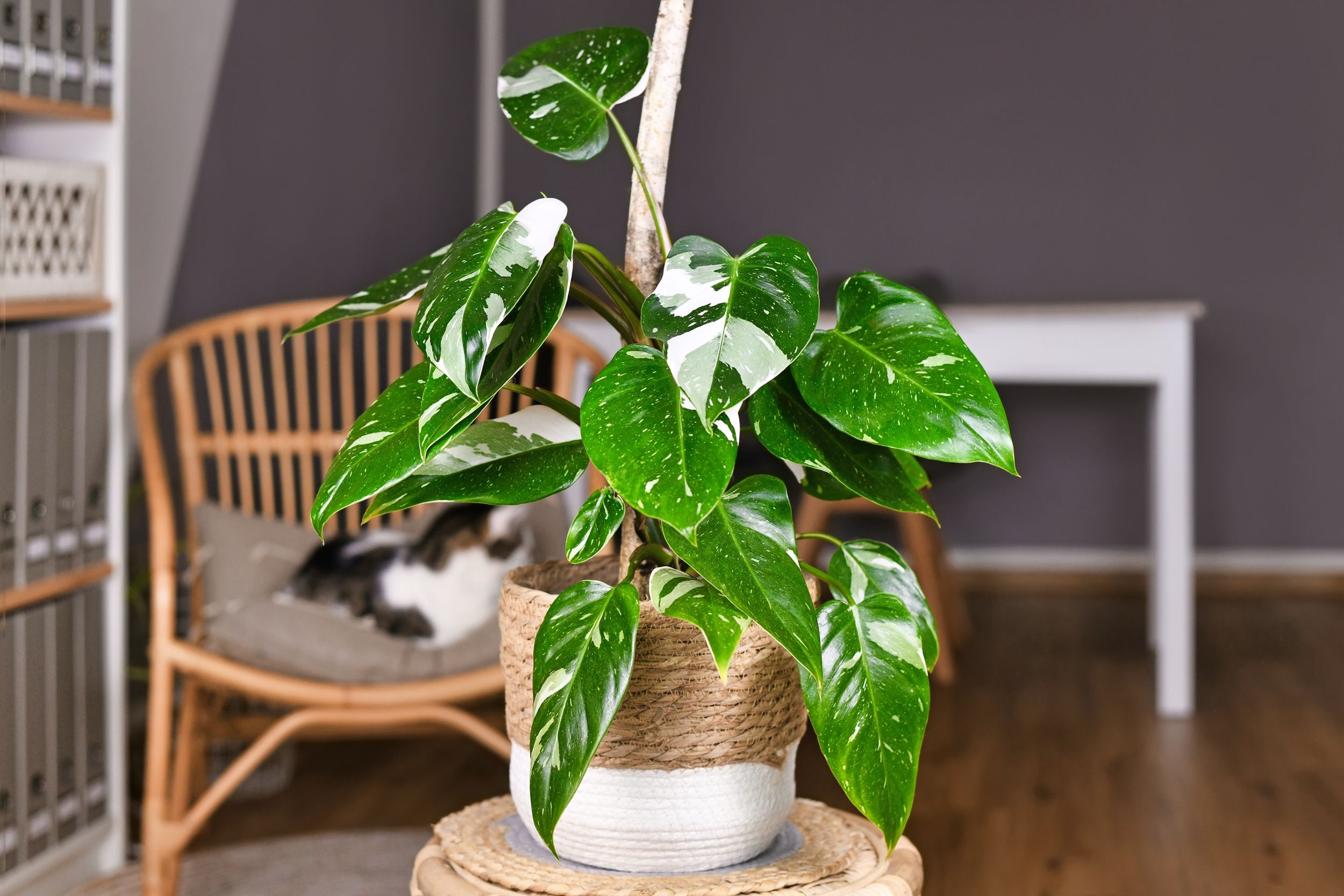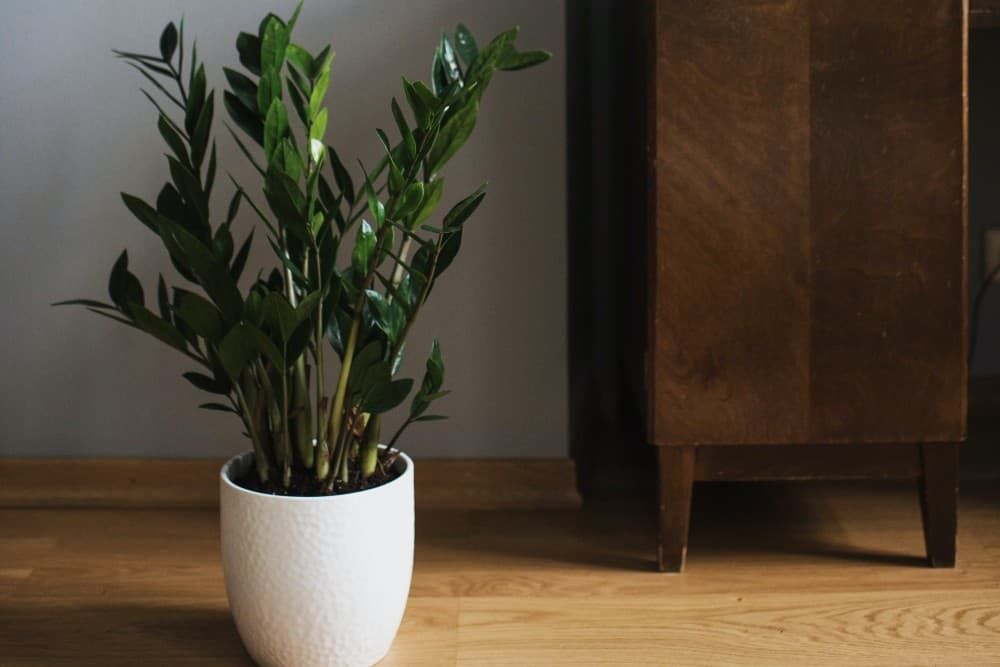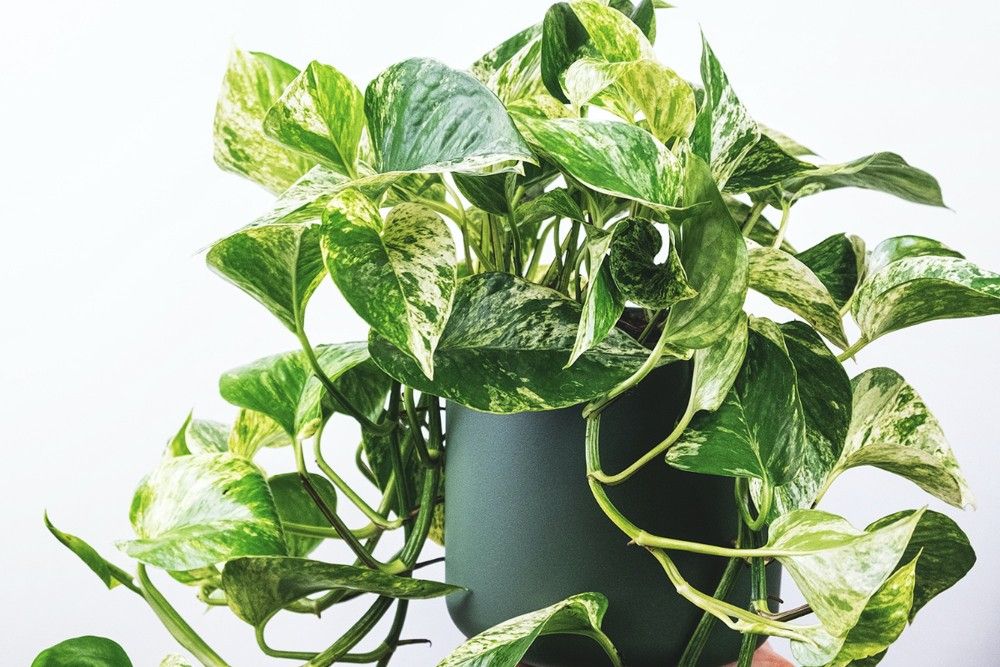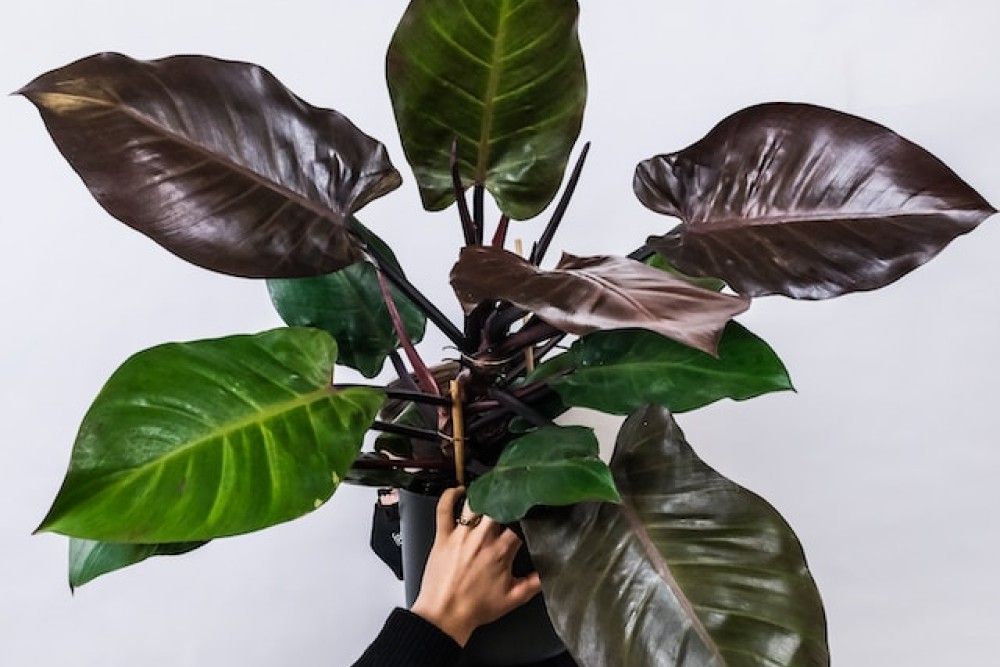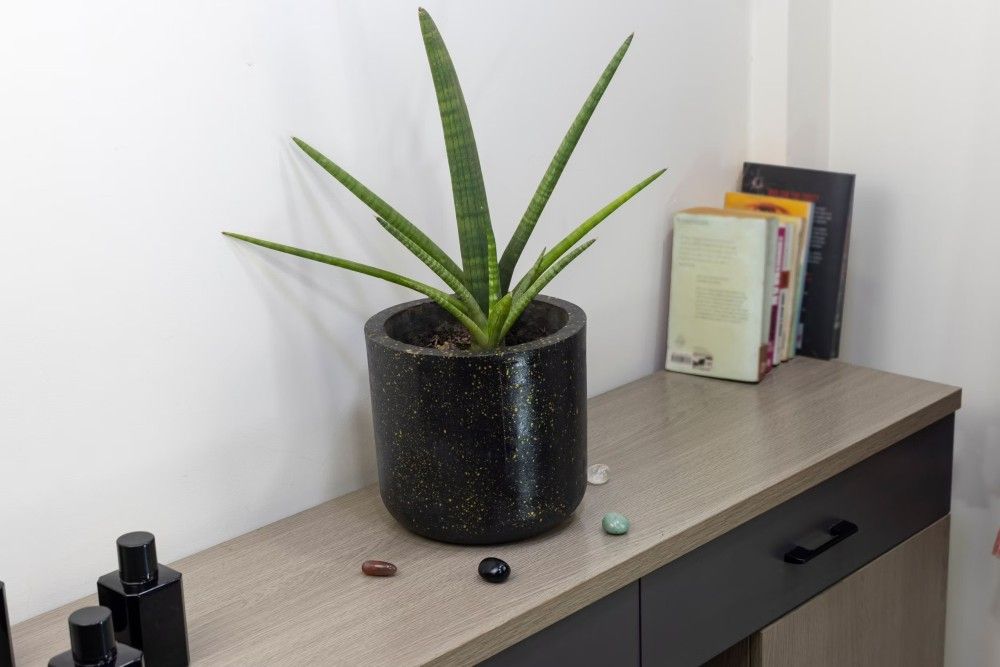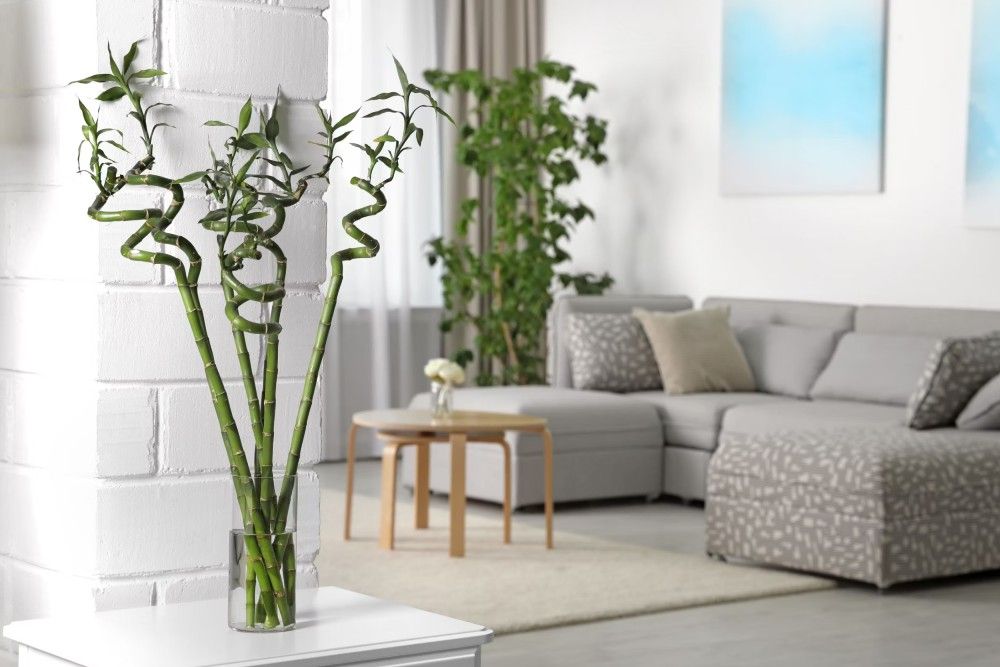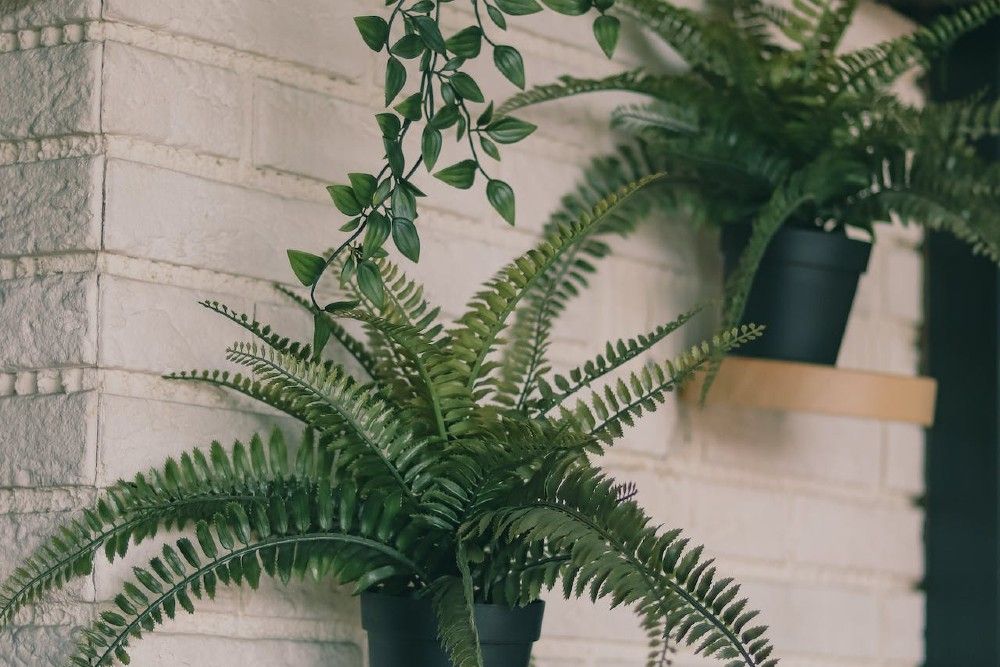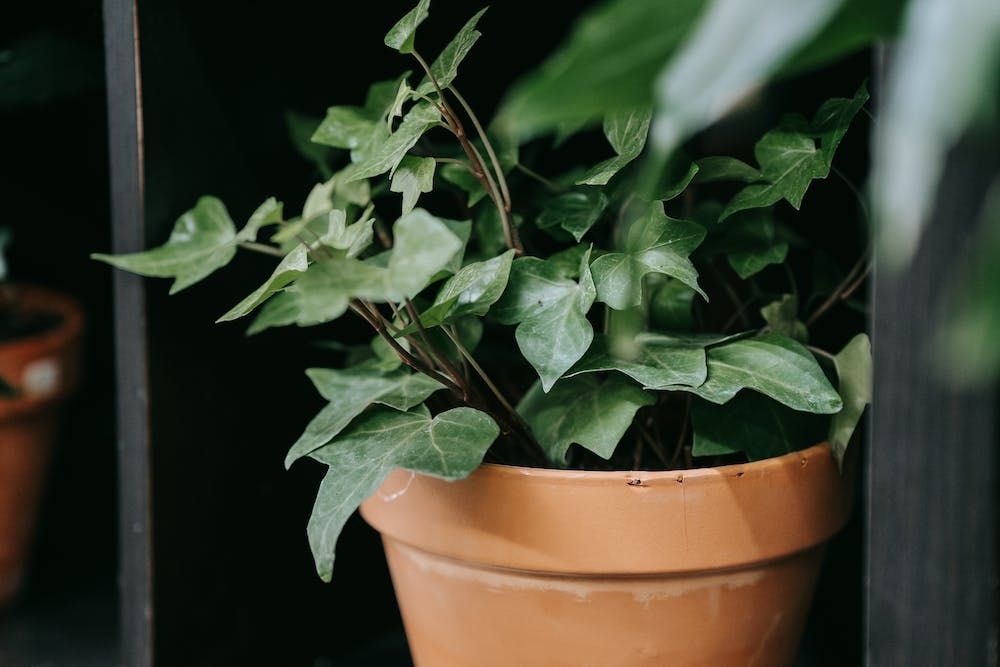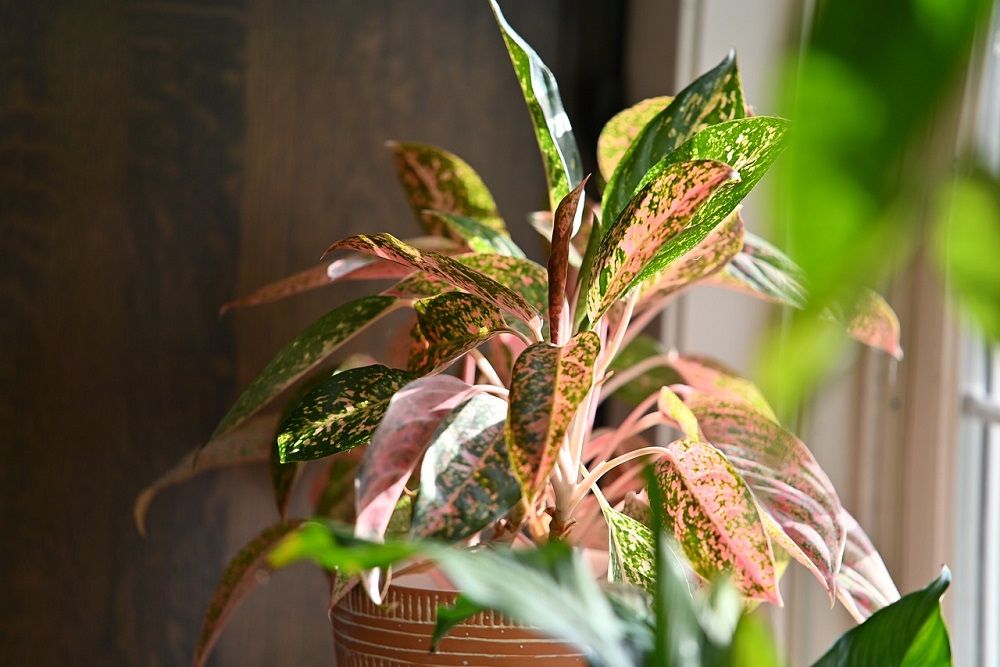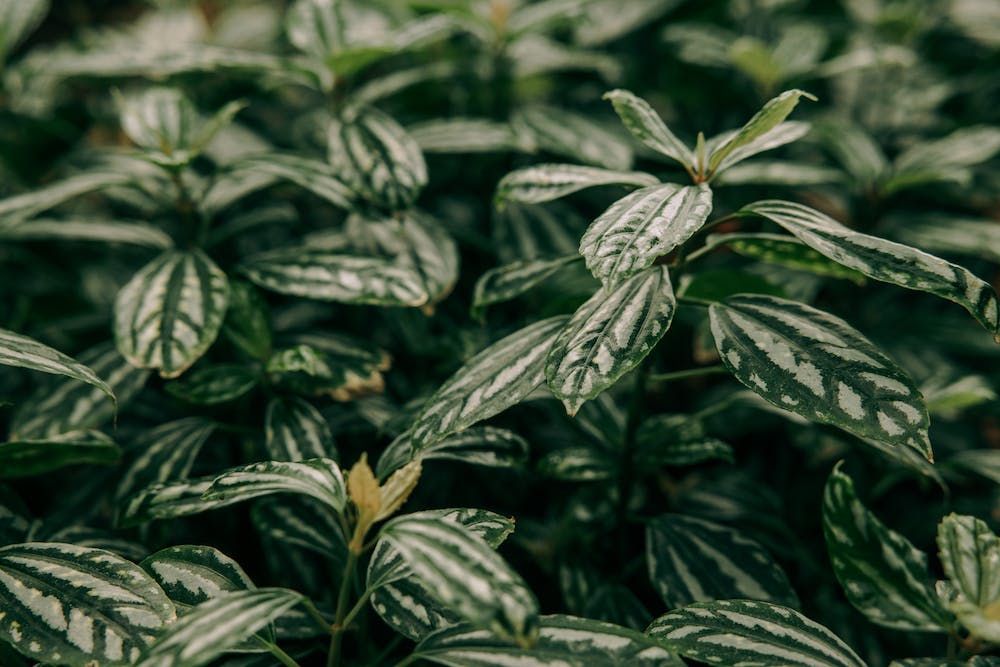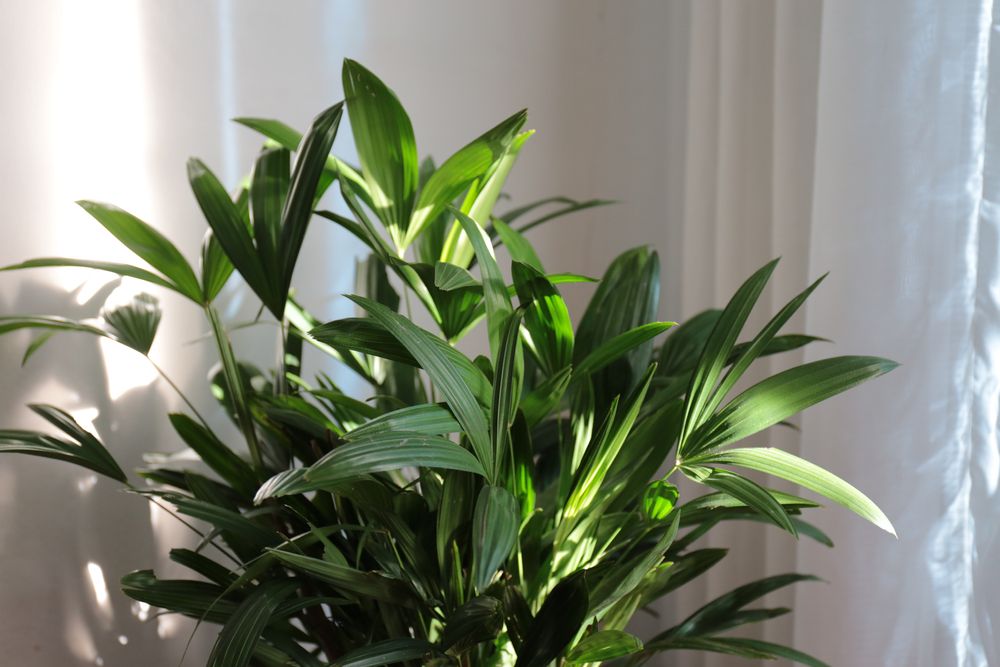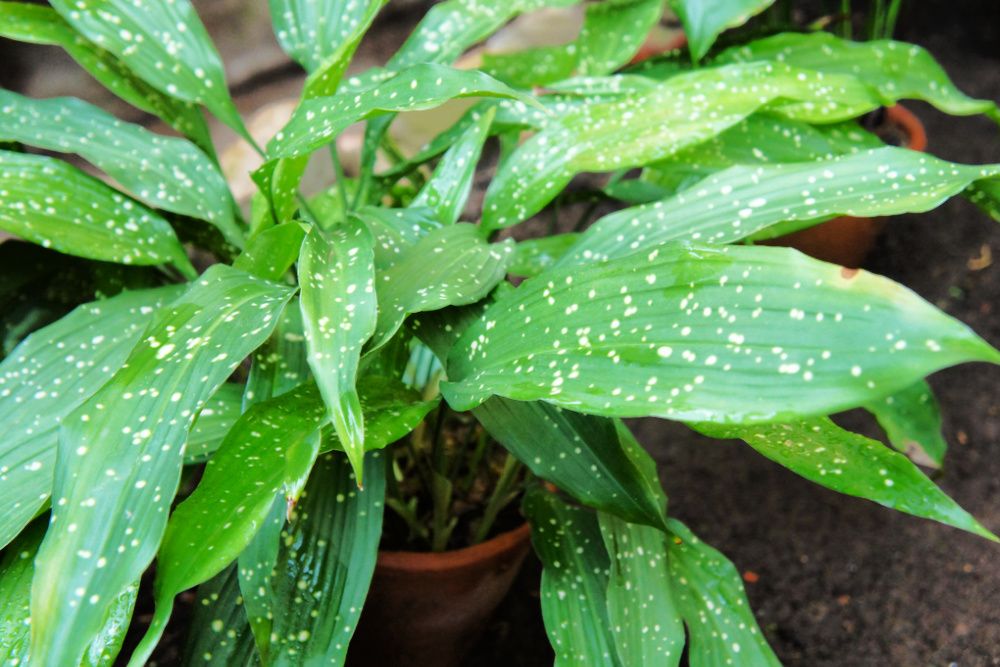Key Takeaways
- Low-light plants like ZZ plants, snake plants, and lucky bamboo can thrive in dark rooms or spaces with only artificial light.
- Pothos and philodendrons are versatile indoor plants that can grow well in both low light and bright, direct light environments.
- Spider plants, ferns, and English ivy are great options for adding color and greenery to a room with low light conditions.
Adding plants to your indoor space is a great way to improve air quality, make you feel happier, and brighten a room. However, most flowering and variegated plants (those with multiple colors) have higher light requirements. When selecting a plant for a dark room, north window, or room with only artificial light, it's important to choose a plant that will thrive in that space.
According to University of Minnesota, low light plants grow well indoors with as little as 50 to 250 foot candles — some can even handle levels as low as 10 foot candles. There are also several plants, like the ZZ plant, snake plant, and lucky bamboo, that grow under solely fluorescent light. That means the office space isn't off the list of places to spruce up. Whatever space you want to liven up, discover the best indoor plants that thrive in low light.
Go Bold With the 'Raven' ZZ Plant
Black plants add a sophisticated and modern style to your decor
Zamioculcas zamiifolia can grow to four feet in height, with shiny, short leaves that look architecturally similar to a palm. ZZ plants, as they are commonly called, are a top contender for thriving in hallways, dark corners, and even office buildings. They prefer indirect light, burning in too much direct sunlight, and can even survive under fluorescent lights.
According to the North Carolina University Extension Gardener, in low-light environments, they require very infrequent watering and may only need monthly watering. Check the soil every seven to 14 days, and only water when the soil is completely dry.
'Raven' is a unique black cultivar particularly tolerant of low light that is a show-stopper for sprucing up an indoor space.
|
Indirect Light |
Grows well in six to 12 hours of indirect sunlight or fluorescent light a day |
|
Direct Light |
Can handle two to six hours of direct sunlight a day |
|
Water |
Water every seven to 14 days when the soil is completely dry |
|
Toxic |
YES |
Embrace the Traditional With a Pothos
Let it trail from a bookcase, shelf, or coffee table
Pothos are popular indoor houseplants that send out vines and climb, and can take over entire window sills, walls, or ceilings. While they grow quite well in bright and direct light, especially the variegated varieties, they are also known for growing in low light environments, and even thriving in office buildings with only artificial fluorescent light.
There are several popular varieties of pothos, but cultivars particularly suited to low light include 'golden,' 'jade,' and 'cebu blue,' pothos. The satin pothos, or Scindapsus pictus, despite sharing its name, is a different species with dark, thick leaves, that also grows well in low light conditions.
While pothos are toxic to pets and children if ingested, they make a great hanging plant, which can help to keep them out of reach.
|
Indirect Light |
Grows well in nine to 12 hours of indirect sunlight or fluorescent light a day |
|
Direct Light |
Can handle two to six hours of direct sunlight a day |
|
Water |
Water every seven to 14 days when the soil is dry |
|
Toxic |
YES |
Philodendrons Are a Conversation Piece
There is a wide variation in the leaves between cultivars
Often confused with the pothos, the philodendron also has an array of stunning cultivars, each with unique leaves. 'Heartleaf,' 'dark lord,' and 'little hope,' are varieties that do well in low light.
In lower light environments, their water needs are also lower. Only water philodendrons when the soil is dry as they are susceptible to root rot.
|
Indirect Light |
Grows well in six to 12 hours of indirect sunlight or fluorescent light a day |
|
Direct Light |
Can handle two to six hours of direct sunlight a day |
|
Water |
Water every seven to 14 days when the soil is dry |
|
Toxic |
YES |
The Go-to for a Dim Space Is the Snake Plant
There are over 70 species of snake plants to choose from
While known to also thrive in direct sunlight, snake plants are ideal for low-light environments (especially the darker green varieties). The pointed leaves can also grow up to four feet in length, making for a dramatic display to spruce up the space.
For a smaller variety, consider the 'bird’s nest,' or 'African spear.' Or go big with the 'whale fin' snake plant for a fun conversation piece.
|
Indirect Light |
Grows well in eight to 10 hours of indirect sunlight or fluorescent light a day |
|
Direct Light |
Can handle two to six hours of direct sunlight a day |
|
Water |
Water every seven to 14 days when the soil is completely dry |
|
Toxic |
YES |
Lucky Bamboo Grows Under Fluorescents
Make any space lucky, even the dim and windowless office
Lucky Bamboo isn’t bamboo at all, but rather a Dracaena, the same genus of trees and succulent shrubs as the snake plant. Lucky bamboo does well in low-light situations, even fluorescent light, and burns in direct sunlight.
This plant is most often grown in water but also grows well in soil. Lucky bamboo prefers a wet environment, so be sure to either change the water weekly (for water grown) or water your potted plant whenever the top 1 to 2 inches of soil are dry.
|
Indirect Light |
Grows well in six to eight hours of indirect sunlight or fluorescent light a day |
|
Direct Light |
Can handle up to two hours of direct sunlight a day |
|
Water |
Water every two to seven days when the top 1 to 2 inches of soil are dry, or change the water weekly if growing in water |
|
Toxic |
YES |
Make the Room Cheery With a Spider Plant
Spider plants are great for cleaning the air and are pet-friendly
Spider plants are one of the best houseplants to add a pop of color to a room, as they look great as a centerpiece or hanging. They are popular plants because they propagate quickly, especially in areas with lots of light. However, spider plants will thrive in a low-light environment — they just won’t grow or propagate as profusely.
There are many varieties of spider plants, including 'bonnie,' 'milky way,' and 'variegatum.' The 'solid green' cultivar, while a bit more uncommon, is ideal for low-light areas.
|
Indirect Light |
Grows well in eight to 10 hours of indirect sunlight or fluorescent light a day |
|
Direct Light |
Can handle two to six hours of direct sunlight a day |
|
Water |
Water every seven days when the soil is dry |
|
Toxic |
NO |
Bounce Back in Time With a Fern
These ancient plants are over 300 million years old
Ferns are notorious for liking shaded, damp places, surviving with as little as two hours of indirect sunlight a day. Although some ferns prefer more light, too much direct sunlight will burn most fronds. 'Bird’s nest,' 'blue star,' 'Boston fern,' 'button,' 'rabbit's foot,' and the 'holly' fern are a few varieties that do well in low light.
Many of these varieties of ferns, such as 'Boston,' 'button,' and 'rabbit's foot' are non-toxic; however, some varieties, such as 'holly' ferns are toxic, so if that's a concern, always check the variety before bringing a new plant into your home.
Most varieties of ferns like moist soil, so be sure to check the soil every seven days and water when the top 1 to 2 inches of soil is dry.
|
Indirect Light |
Grows well in two to 12 hours of indirect sunlight |
|
Direct Light |
Can handle two to six hours of direct sunlight a day |
|
Water |
Water every seven days when the top 1 to 2 inches of soil are dry |
|
Toxic |
YES, some varieties are |
Enjoy English Ivy Indoors
Ivy can handle low light as well as lower temperatures
English ivy is often seen taking over outside of homes but has gained popularity as an indoor vine plant. Despite growing out of control under full light, English ivy (especially non-variegated types) also does well in low light situations, with about eight to 10 hours of indirect sunlight.
Its unique leaf structure is eye-catching and will spruce up a dim corner. For a plant that isn’t toxic to pets, consider grape ivy, which also does well in low light.
|
Indirect Light |
Grows well in eight to 10 hours of indirect sunlight |
|
Direct Light |
Can handle six or more hours of direct sunlight a day |
|
Water |
Water every seven days when the top ½ inch of soil is dry |
|
Toxic |
YES |
Bouquet of Color With Chinese Evergreen
Can survive with only 10 foot candles
According to the University of Missouri, Chinese evergreens can survive with just 10 foot candles of light, but the bright-colored varieties may lose their color over time. For a particularly dim area or one with only artificial light, choose 'emerald beauty,' 'parrot jungle,' or 'queen julienne,' all darker-green varieties.
Chinese evergreens will flower in good light but are primarily grown for their aesthetically pleasing foliage.
|
Indirect Light |
Grows well in four to 10 hours of indirect sunlight or fluorescent light a day |
|
Direct Light |
Can handle two to six hours of direct sunlight a day |
|
Water |
Water every seven to 10 days when the top 1 to 2 inches of soil is dry |
|
Toxic |
YES |
Tropical Vibe With a Watermelon Pilea
Pilea's are great small plants for sprucing up an indoor space
Resembling the fruit it’s named after, this pilea's leaves look like the outside of a watermelon. It is also commonly called the aluminum plant, for the silvery splashes on the leaves. This plant grows well in as little as four hours of indirect sunlight a day, making it ideal for a darker corner table or desk.
Thankfully, this plant, named after the juicy fruit, is not toxic.
|
Indirect Light |
Grows well in four to eight hours of indirect sunlight |
|
Direct Light |
Can handle up to two hours of direct sunlight a day |
|
Water |
Water every seven to 10 days when the top 1 to 2 inches of soil is dry |
|
Toxic |
NO |
Go Big With a Broadleaf Lady Palm
This is one of the few palms that thrives in low light
If you want to add a houseplant to your collection to make your indoor space stand out, a broadleaf lady palm is a great choice. This plant prefers indirect light (needing only six hours minimum) and can even survive off of fluorescent light. It also does well with lower humidity levels.
As an added bonus, this large plant, which can grow up to 15 feet in height, is non-toxic.
|
Indirect Light |
Grows well in six to 12 hours of indirect sunlight or fluorescent light a day |
|
Direct Light |
Can handle two to six hours of direct sunlight a day |
|
Water |
Water every seven to 10 days when the top 1 to 2 inches of soil is dry |
|
Toxic |
NO |
Cast Iron Plants Brighten the Darkest Corner
Excellent for spaces with low light and cooler temperatures
The cast iron plant is one of the best plants for those dark basements, hallways, and corners. Not only can it thrive with only indirect or artificial light, but it can also handle cooler temperatures (down to 50 degrees Fahrenheit), making it ideal for sprucing up those lower levels. Cultivars include 'milky way,' with white spots, 'Lennon's song,' with a variegated center, and 'China star,' with long speckled leaves.
The cast iron plant also isn't toxic, meaning it's pet and kid-friendly.
|
Indirect Light |
Grows well in six to eight hours of indirect sunlight or fluorescent light a day |
|
Direct Light |
Can handle up to two hours of direct sunlight a day |
|
Water |
Water every seven to 14 days when the top 1 to 2 inches of soil are dry |
|
Toxic |
NO |
Dim the Lights!
These are just a few of the top indoor plants that thrive in low-light environments. While non-variegated plants are often the best in low-light environments, quite a few variegated plants will also do well in a north window or dim room.
If you want to try a flowering plant, consider a peace lily — it is one of the only flowering plants that prefers lower light. To assist your plants with higher light needs, add artificial light, or, in the summer months, bring your plants outside for a few hours a day. Moving low light plants to areas of higher light every so often can help with overall health.
To improve the quality of light your plants receive, wipe down your plants, keep your windows clean, and consider installing mirrors to redirect light.
Are you excited to welcome any of these plants into your home? Be sure to share this article with your family and friends to get their opinion!

